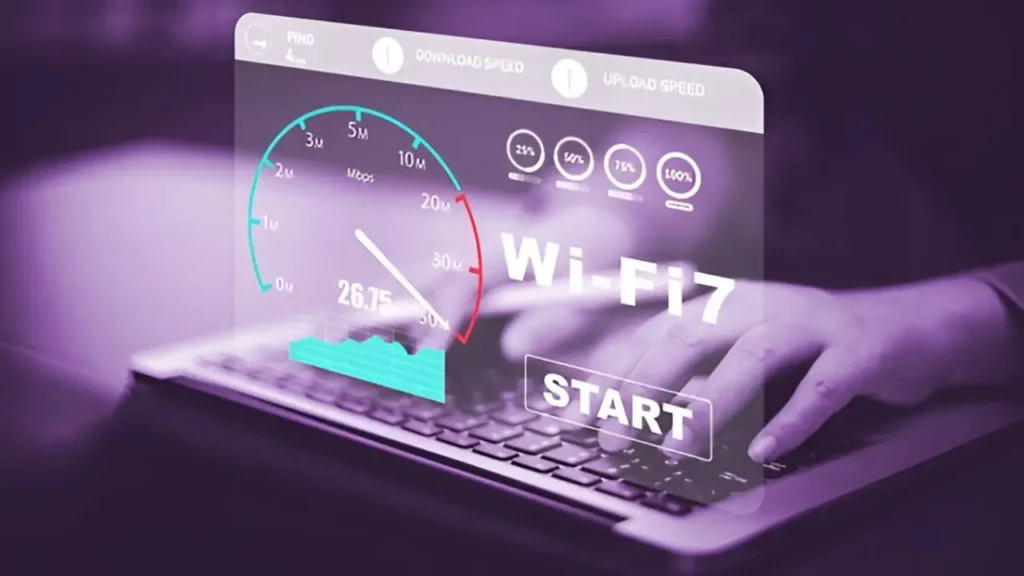Wi-Fi technology continues to evolve rapidly, and with each new generation, it promises faster speeds, lower latency, and improved connectivity. The latest buzz in the tech world is Wi-Fi 7, the next-generation wireless standard set to revolutionize how we connect our devices.
If you’re wondering, “What is Wi-Fi 7?”, “How does it compare to Wi-Fi 6?”, or “Do I need Wi-Fi 7 in 2025?”, this guide will break down everything you need to know about Wi-Fi 7 and whether upgrading makes sense for you. Read more on TODAY Explainer
What is Wi-Fi 7?
Wi-Fi 7, also known as IEEE 802.11be, is the upcoming wireless networking standard succeeding Wi-Fi 6 (802.11ax) and Wi-Fi 6E. It’s designed to deliver unprecedented speed, efficiency, and reliability for home and business networks.
Key highlights include:
- Multi-Gigabit Speeds: Wi-Fi 7 aims to support speeds up to 46 Gbps, nearly three times faster than Wi-Fi 6.
- Lower Latency: Enhanced features reduce lag, making it ideal for gaming, AR/VR, and real-time applications.
- Better Spectrum Efficiency: Uses wider channels (up to 320 MHz) and supports multi-link operation (MLO) for smoother connectivity.
- Improved Capacity: Can handle more devices simultaneously without compromising performance.
How Does Wi-Fi 7 Differ From Wi-Fi 6 and Wi-Fi 6E?
- Speed: Wi-Fi 6 tops out around 9.6 Gbps, while Wi-Fi 7 targets up to 46 Gbps.
- Channels: Wi-Fi 6E added 6 GHz band support; Wi-Fi 7 increases channel width to 320 MHz from 160 MHz.
- Multi-Link Operation: Wi-Fi 7 allows devices to connect to multiple frequency bands at once (2.4 GHz, 5 GHz, 6 GHz), improving throughput and reliability.
- Reduced Latency: Wi-Fi 7 enhances Target Wake Time (TWT) and other mechanisms to reduce delays.
What Are the Practical Benefits of Wi-Fi 7?
- Faster Downloads and Streaming: Download large files, 8K videos, and heavy games faster than ever.
- Better Gaming Experience: Reduced lag and jitter help competitive gamers stay ahead.
- Improved Video Conferencing: Smoother video calls with less buffering and dropped connections.
- Smart Home Efficiency: Supports more smart devices running simultaneously without slowdowns.
- Future-Proofing: Preparing your home network for the influx of data-hungry applications and devices.
When Will Wi-Fi 7 Be Available?
Wi-Fi 7 devices and routers are expected to start hitting the market by late 2024 and become more mainstream in 2025. Early adopters might find premium routers and some flagship smartphones supporting Wi-Fi 7 by the end of this year or early next year.
Do You Need Wi-Fi 7 in 2025?
Here are some factors to consider:
- Your Current Setup: If you have a high-speed fiber or gigabit internet plan and multiple devices streaming 4K/8K or gaming, Wi-Fi 7 will provide noticeable benefits.
- Device Compatibility: Wi-Fi 7 requires compatible routers and devices. Check if your smartphone, laptop, or smart home devices support it.
- Use Case: Casual browsing and streaming on a few devices may not need Wi-Fi 7 yet. But if you work from home, game competitively, or rely on AR/VR, upgrading can boost performance.
- Budget: Wi-Fi 7 routers and gadgets will initially be premium-priced. Consider waiting if you’re on a budget.
How to Prepare for Wi-Fi 7
- Upgrade Your Router: When Wi-Fi 7 routers become affordable, upgrading can future-proof your home network.
- Check Device Support: Look for Wi-Fi 7 support in new smartphones, laptops, and IoT devices.
- Optimize Your Network: Until then, optimize your current Wi-Fi 6 setup by placing routers strategically and minimizing interference.
Conclusion
Wi-Fi 7 promises to be a game-changer in wireless technology with blazing-fast speeds, ultra-low latency, and superior connectivity for a world increasingly dependent on internet-connected devices.
While it might not be essential for everyone in 2025, tech enthusiasts, gamers, and power users will find great value in upgrading to Wi-Fi 7. For most users, Wi-Fi 6 and 6E will continue to serve well in the short term, but keeping an eye on Wi-Fi 7’s rollout can help you decide the right time to upgrade.
Related Articles
- Samsung Galaxy S23 Ultra vs iPhone 15 Pro Max: Ultimate Comparison in 2025
- Top 10 Smartphones with the Best Battery Life in 2025 | Long-Lasting Battery Phones
- 5G vs 6G: Key Differences, Timeline & What to Expect by 2030
- How to Protect Your Smartphone from Hackers in 2025
- How to Create Passive Income: 30 Passive Income Ideas to Build Wealth
What is Wi-Fi 7 and how is it different from Wi-Fi 6?
Wi-Fi 7 (802.11be) is the latest wireless standard with faster speeds, lower latency, and better multi-device support than Wi-Fi 6. It can deliver speeds up to 46 Gbps and supports wider 320 MHz channels and multi-link operation.
Do I need to upgrade to Wi-Fi 7 in 2025?
If you use multiple high-bandwidth devices for gaming, streaming, or remote work, Wi-Fi 7 can offer noticeable improvements. However, casual users with stable Wi-Fi 6 networks may not need to upgrade just yet.
Will my current devices work with Wi-Fi 7 routers?
Yes, Wi-Fi 7 routers are backward compatible with Wi-Fi 6, 6E, and older devices. However, to fully benefit from Wi-Fi 7’s features, your devices must support the new standard.



